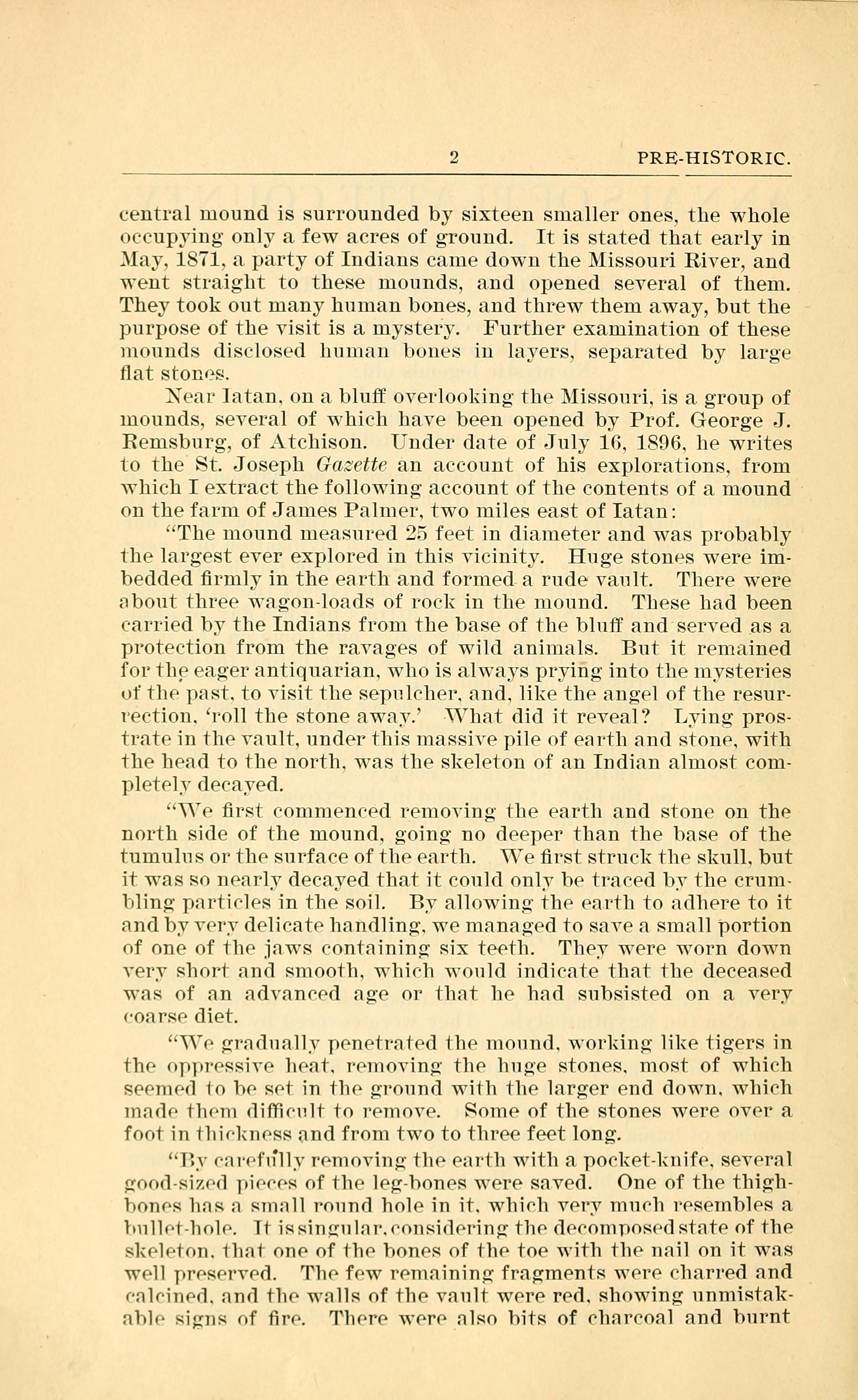Annals of Platte County, Missouri - Paxton
[previous page] [next page]

[previous page] [next page]
2 PRE-HISTORIC. central mound is surrounded by sixteen smaller ones, the whole occupying only a few acres of ground. It is stated that early in May, 1871, a pa.rty of Indians came down the Missouri River, and went straight to these mounds, a.nd opened several of them. They took out many human bones, and threw them away, but the purpose of the visit is a mystery. Further examination of these mounds disclosed human bones in layers, separated by large at stones. Near latan. on a bluff overlooking the Missouri, is a group of mounds, several of which have been opened by Prof. George J. Remsburg, of Atchison. Under date of July 16, 1896, he writes to the St. Joseph Gazette an account of his explorations, from which I extract the following account of the contents of a mound on the farm of James Palmer, two miles east of Iatan: The mound measured 25 feet in diameter and was probably the largest ever explored in this vicinity. Huge stones were im- bedded rmly in the earth and formed a rude vault. There were about three wagon-loads of rock in the mound. These had been carried by the Indians from the base of the bluff and served as a protection from the ravages of wild animals. But it remained for the eager antiquarian. who is always prying into the mysteries of the past. to visit the sepulcher, and, like the angel of the resur- rection. roll the stone away. -Vhat did it reveal? Lying pros- trate in the vault, under this massive pile of earth and stone, with the head to the north, was the skeleton of an Indian almost com- pletely decayed. Ve rst commenced removing the earth and stone on the north side of the mound, going no deeper than the base of the tumulus or the surface of the earth. We rst struck the skull, but it was so nearly decayed that it could only be traced by the crum~ bling particles in the soil. By allowing the earth to adhere to it and by very delicate handling, we managed to save a small portion of one of the jaws containing six teeth. They were worn down very short and smooth, which would indicate that the deceased was of an advanced age or that he had subsisted on a very coarse diet. We gradually penetrated the mound, working like tigers in the oppressive heat. removing the huge stones. most of which seemed to be set in the ground with the larger end down. which made them difeult to remove. Some of the stones were over a foot in thickness and from two to three feet long. .v carefnlly removing the earth with a pocket-knife. several good-si/.ed pieces of the leg-bones were saved. One of the thigh- bones has a small round hole in it. which very much resembles a bullet-hole. It is singular.considering the decomposed state of the skeleton. that one of the bones of the toe with the nail on it was well preserved. The few remaining fragments were charred and calcined. and the walls of the vault were red. showing unmistak- able signs of re. There were also hits of charcoal and burnt